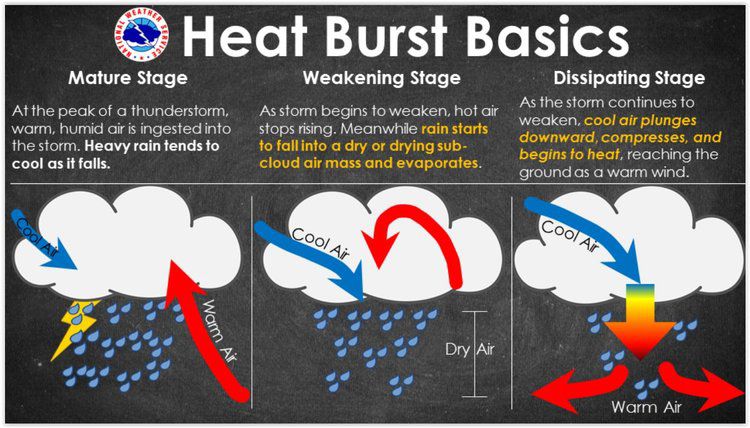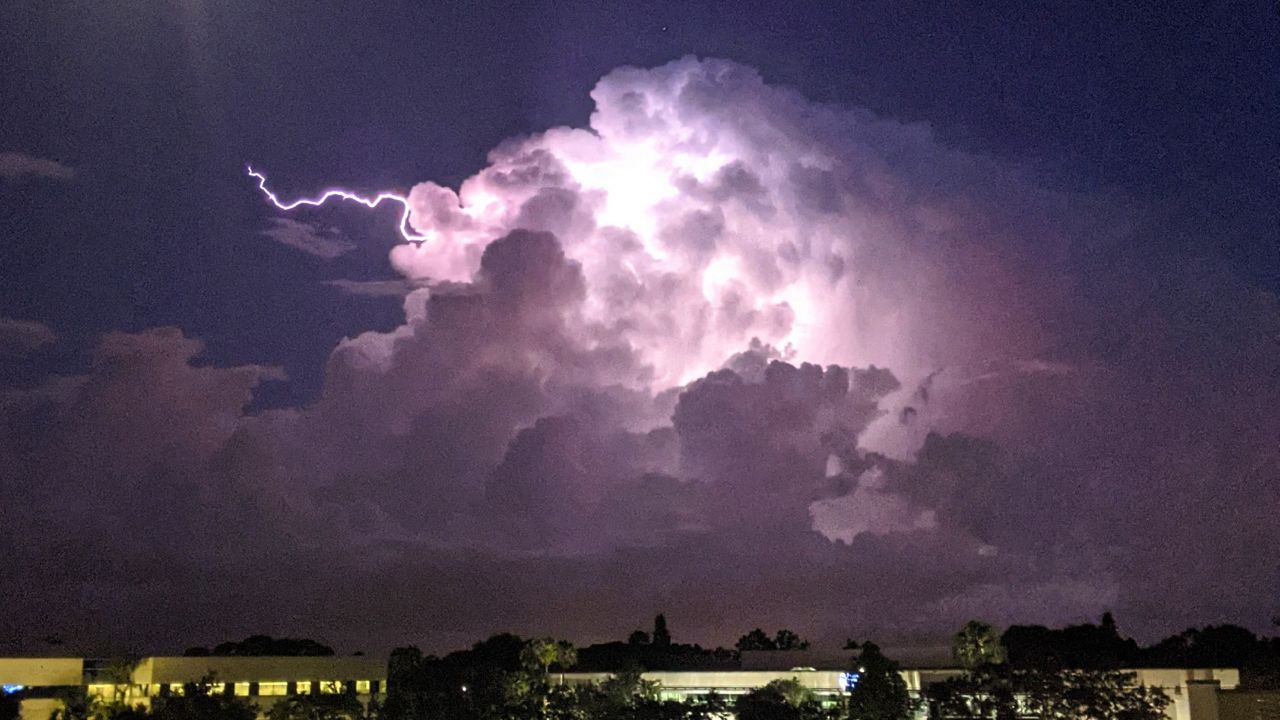A heat burst is a rare phenomenon that makes temperatures spike during the evening or nighttime. Along with a dramatic temperature increase, it’s also associated with gusty winds and a sudden drop in humidity.
It’s likely that most people will never experience a heat burst firsthand. Not only are they very localized, but they are rare and difficult to predict.
Heat bursts are associated with decaying thunderstorms. They’re like a microburst, except dry. Heat bursts usually only happen late in the evening and at night, and during the late spring and summer.
A couple of ingredients are necessary for a heat burst to occur. It includes a decaying thunderstorm, and a hot and dry layer in the mid-level of the atmosphere.
Thunderstorms are convective systems. During the first stage, as the storm develops, it’s dominated by updrafts and rising air.
During the final stage of a thunderstorm, the dissipating stage, downdrafts dominate. If the conditions are right and hot and dry air is present in mid-levels of the atmosphere, a heat burst can happen.
As the downdraft rushes down through hot and dry air in the mid-levels, the moisture, or rain, in the downdraft evaporates. The evaporated moisture initially cools the surrounding air, but once all the moisture is gone, it warms.

Air continues to rush toward the surface, undergoing a process called compressional warming. That’s what happens when air molecules get compressed together, subsequently warming and drying.
As this downdraft reaches the surface, it rapidly warms and dries the air on the surface and greets it with strong, gusty winds. That is what’s known as a heat burst.
Even though they’re rare, they still occur. On June 17, 2023, Georgetown, Texas, saw a heat burst. The temperature went from 82 to 99 degrees in just over an hour.
Not only can you notice the spike in temperature, but the dew point and relative humidity plummet simultaneously.
On May 20, 2022, a heat burst occurred in Greenville, N.C., bringing the temperature from the mid-50s up to 86 degrees in an hour.
In 1960, a storm in Kopperl, Texas–known as "Satan’s Storm"–produced a heat burst that brought wind gusts of 80 mph and broke thermometers.
The initial temperature of 75 degrees skyrocketed up to 100 degrees before the thermometers broke, designed to go up to 140 degrees. Crops were destroyed. One farmer reported that up to 140 acres of cotton burned to a crisp.
You can learn more about that heat burst here.
Our team of meteorologists dive deep into the science of weather and break down timely weather data and information. To view more weather and climate stories, check out our weather blogs section.



